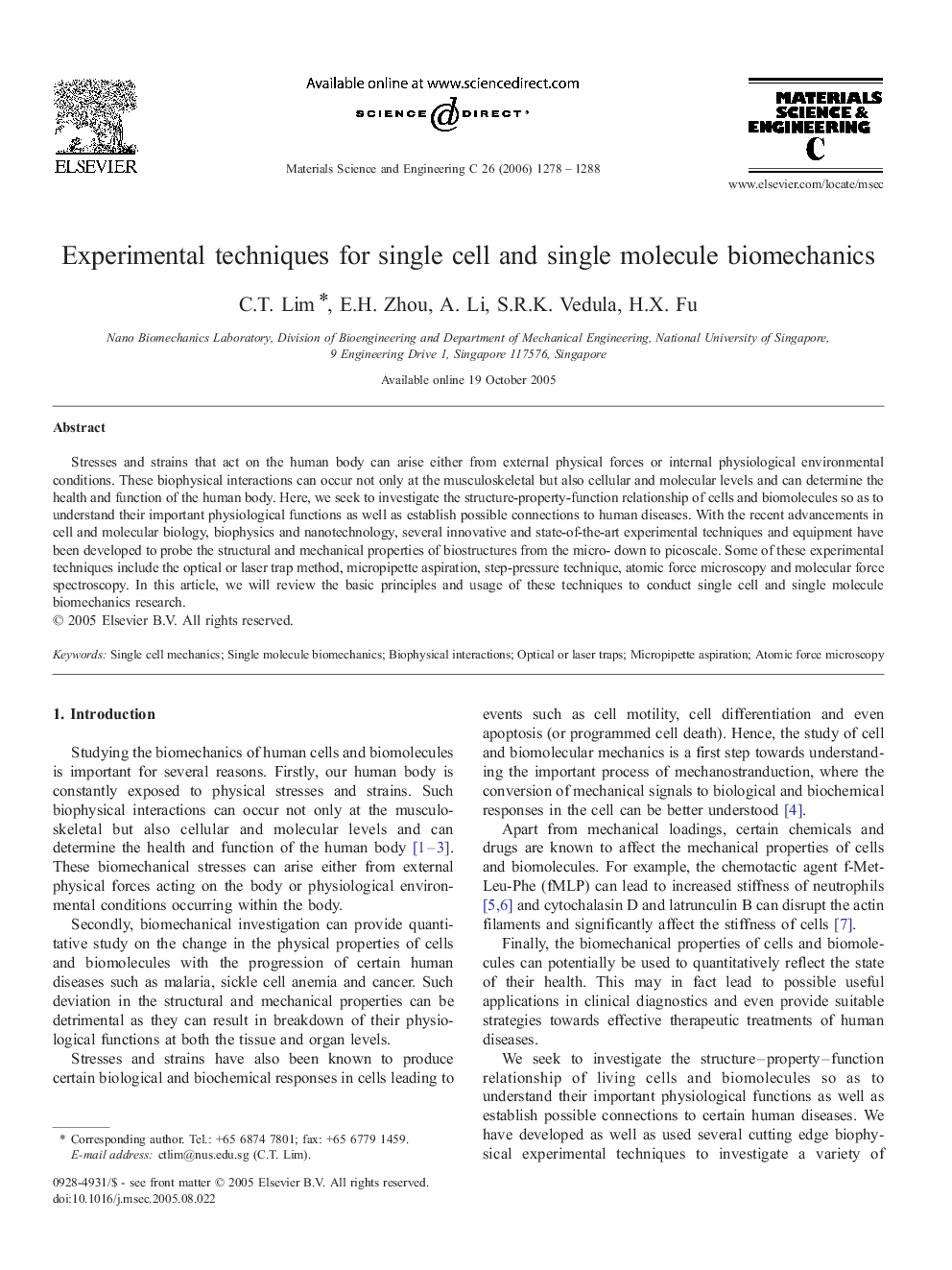| Article ID | Journal | Published Year | Pages | File Type |
|---|---|---|---|---|
| 1431139 | Materials Science and Engineering: C | 2006 | 11 Pages |
Stresses and strains that act on the human body can arise either from external physical forces or internal physiological environmental conditions. These biophysical interactions can occur not only at the musculoskeletal but also cellular and molecular levels and can determine the health and function of the human body. Here, we seek to investigate the structure-property-function relationship of cells and biomolecules so as to understand their important physiological functions as well as establish possible connections to human diseases. With the recent advancements in cell and molecular biology, biophysics and nanotechnology, several innovative and state-of-the-art experimental techniques and equipment have been developed to probe the structural and mechanical properties of biostructures from the micro- down to picoscale. Some of these experimental techniques include the optical or laser trap method, micropipette aspiration, step-pressure technique, atomic force microscopy and molecular force spectroscopy. In this article, we will review the basic principles and usage of these techniques to conduct single cell and single molecule biomechanics research.
